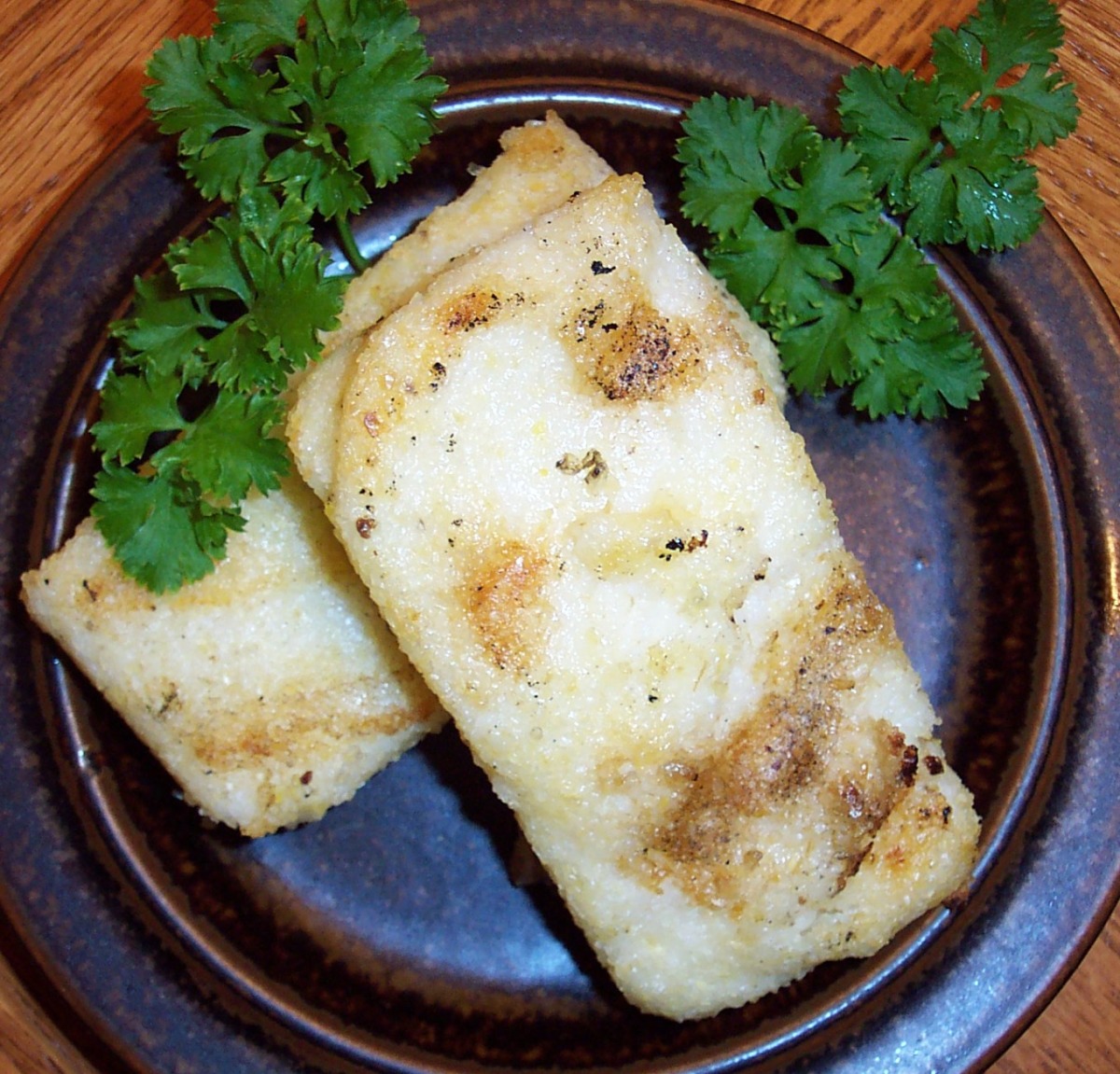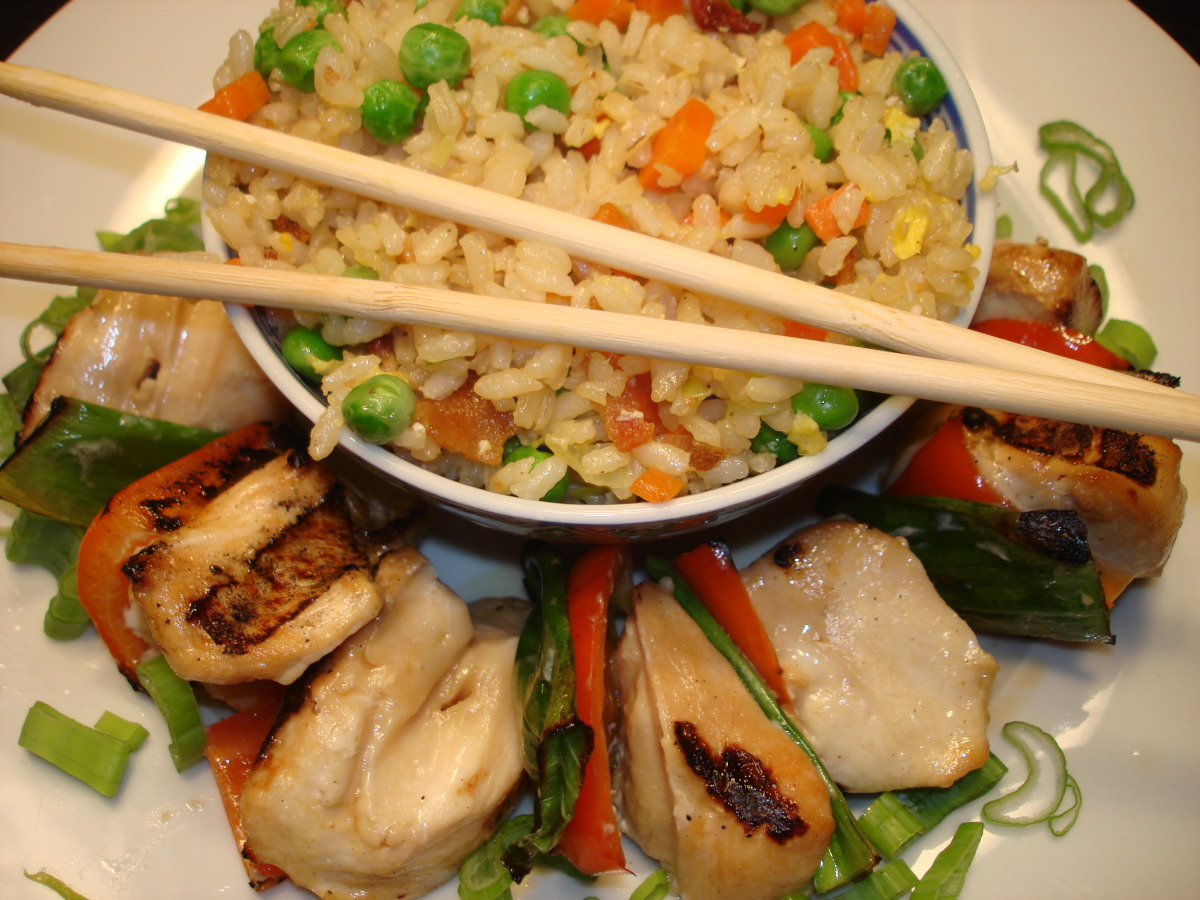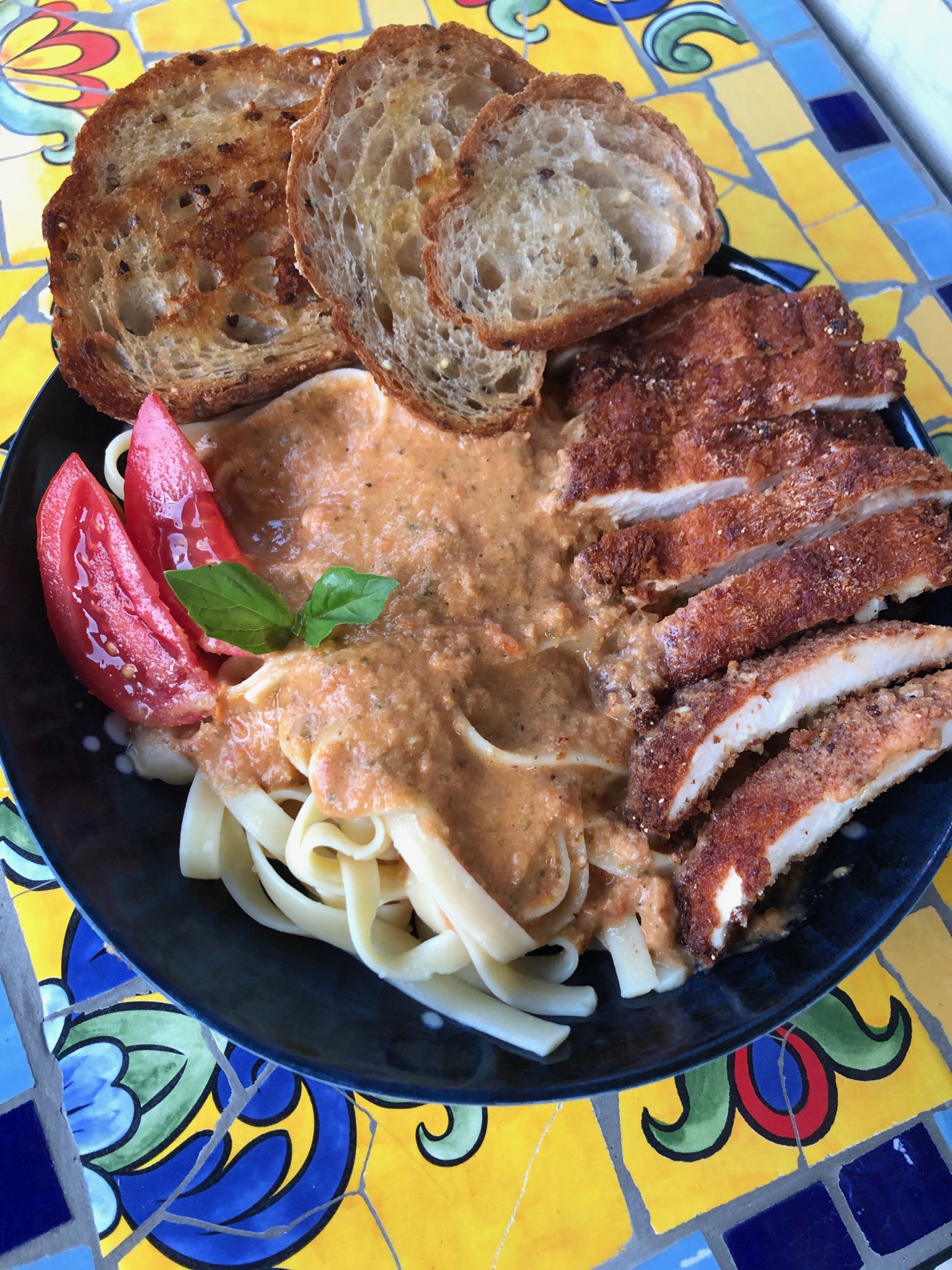**Tamago Maki (Japanese Egg Roll): A Delectable Dish with Variations**
Tamago maki, also known as tamagoyaki, is a delectable Japanese egg dish that delights the palate with its fluffy texture and savory flavors. This versatile dish can be enjoyed on its own, as a side dish, or as a filling for sushi rolls and bento boxes. Its distinct appearance, with its golden-brown exterior and delicate layers, makes it a visually appealing addition to any meal. In this article, we present two variations of tamago maki: a classic recipe and a dashimaki tamago recipe that incorporates dashi, a flavorful Japanese broth, for an enhanced taste experience. Both recipes provide step-by-step instructions to guide you in creating this iconic dish, ensuring a successful and enjoyable cooking journey.
TAMAGO SUSHI RECIPE

Tamago Sushi is sweet and savory, with a light, fluffy texture. It's made with Japanese rolled omelet (Tamagoyaki) and seasoned sushi rice. This classic egg sushi is a favorite for adults and children alike and is usually served for breakfast or as a side dish in a bento box. Tamagoyaki is also delicious when served on top of sushi rice.
Provided by Izzy
Time 1h
Number Of Ingredients 12
Steps:
- Wash the rice and add it to the rice cooker together with water. Once cooked, transfer to a large bowl and let it cool down slightly. When it's still very warm, stir in the sushi vinegar (or the mixture of rice vinegar, sugar, and salt).
- Beat the eggs in a bowl. Make sure not to over-beat the eggs.
- In another bowl, whisk together water, rice vinegar, sugar and mirin until sugar is dissolved.
- Combine the egg mixture with the seasoning mixture. Whisk gently. Strain the egg mixture through a sieve. Pour the mixture into a measuring cup or a jar with a spout and handle for easy pouring during cooking.
- Heat a rectangular tamagoyaki pan (you can also use a round pan, see notes*) over medium. Then dip a folded paper towel in oil, and apply to the pan.
- Once the oil is hot, pour a thin layer of the seasoned egg mixture into the pan. Tilt the pan to allow the liquid to flow to the edge of the pan.
- After the egg has set a little bit but still soft on the surface, start rolling it into a log shape. Make sure the egg is not cooked too much, otherwise, it won't stick as you roll the log. (It's fine if your eggs are not neatly folded).
- Move the rolled omelette to one side, and apply more oil to the pan with the paper towel. (Remember to apply the oil under the omelette.)
- Pour another layer of egg mixture cover the bottom of the pan. Lift the omelette to let the mixture run underneath.
- When this new layer has set slightly and still soft on the top, start rolling the log back onto the set egg to the other end of the pan.
- Repeat this process until you've used all the egg mixture.
- Remove from the pan and place the tamagoyaki on a sushi mat. Wrap it up and shape the tamagoyaki when it's still hot. Let it rest for about 5 minutes.
- Slice the tamagoyaki into 12 pieces, and set aside.
- Cut the nori seaweed into ¼-inch wide strips. Set aside.
- Take 3/4 handful cooked rice and shape it to a long oval form (about 1 ½ inche). Squeeze the rice gently and flatten the bottom. (You can dip your hands in vinegar water** to prevent sticking.)
- Place a piece of tamagoyaki on the rice, and then press it firmly to sick on the rice.
- Wrap the nori strip around the width of the sushi to secure the tamagoyaki to the rice. Repeat to make 12 pieces.
- Place the assembled Tamago sushi on the plate. Serve with optional soy sauce.
Nutrition Facts : Calories 86 kcal, Carbohydrate 15 g, Protein 3 g, Fat 1 g, SaturatedFat 1 g, TransFat 1 g, Cholesterol 55 mg, Sodium 82 mg, Fiber 1 g, Sugar 2 g, ServingSize 1 serving
TAMAGO MAKI (ALSO TAMAGOYAKI): JAPANESE EGG ROLL
This recipe makes a nice savory tamago maki. I've put it together using various bits of advice and a lot of experimentation. Moreover, I've made it without a tamagoyaki pan. It can also be put on top of nigiri (rice balls) to make tamagozushi.
Provided by vengefulspectre
Categories Breakfast
Time 15m
Yield 1 roll, 1-3 serving(s)
Number Of Ingredients 6
Steps:
- Beat the eggs, strain through fine sieve, and add to dashi stock, mirin, sugar, and soy sauce.
- Heat pan (tamagoyaki pan OR a small-ish skillet--a flat, square pan would work best, but I have used a round one with little difficulty) to medium high heat with PLENTY of cooking oil. I find that the oils sold in spray bottles, like Pam, work the best to spread it out evenly.
- Pour enough of the egg mixture onto the pan to spread evenly over the surface, about 1/3 of the mixture.
- Allow mixture to cook just until the egg is set (but not cooked all the way, or the layers won't stick to each other when you roll it). I determine this by looking for the dark yellow, orangish color to appear. Sprinkle some of the green onions over this.
- Start rolling the omlette by picking up the edge farthest away from you and pulling it toward you. I often do this in steps, flipping about 1/4 of the edge over, letting it set, then flipping that over (like a jelly roll) etc, until the entire omlette is rolled up.
- Now, re-oil the exposed part of the pan and add 1/2 of the remaining mixture. Repeat steps 4 and 5.
- Repeat step 5, which should use up the rest of the egg mixture.
- Allow to cool (so that it cooks all the way through) and wrap in paper towel. You can make the shape more rectangular (for tamagozushi, for example) by gently putting pressure on the paper towel.
- Cut into slices (usually 0.25-0.5 cm or so) to serve. Garnish with remaining green onions.
TAMAGOYAKI (JAPANESE ROLLED OMELET)
Tamagoyaki, a Japanese staple, is made by carefully rolling several thin layers of cooked egg into a rectangular omelet, which creates a soft and delicate texture. Traditionally, it's made in a special tamagoyaki pan, but this version also works with an 8-inch nonstick skillet. There are sweet and savory variations, and this recipe falls somewhere in between the two: The soy sauce, mirin and dashi pack it with umami, while the sugar adds a subtle sweetness. The technique can be challenging at first, but do your best to keep each layer consistent in color and each fold parallel to the last. Don't worry about little tears; they'll be covered up with the next layer.
Provided by Kiera Wright-Ruiz
Categories breakfast, brunch, dinner, for one, for two, lunch, snack, weekday, main course, side dish
Time 15m
Yield 2 servings
Number Of Ingredients 6
Steps:
- In a small bowl, combine eggs, mirin, soy sauce, dashi (if using) and sugar. Whisk until well combined.
- Heat 1 teaspoon oil in a tamagoyaki pan or a nonstick 8-inch skillet over medium. Using a small piece of folded paper towel, carefully wipe the excess oil from the pan and set aside paper towel (you will need it to grease the pan for each egg layer).
- Pour about 3 tablespoons of the egg mixture into the pan and quickly tilt the pan, swirling the egg mixture around to create an even layer. If there are thicker areas, gently poke a small hole at the thickest point with chopsticks and tilt and swirl the pan to cover exposed areas with more raw egg to form an even layer.
- After the layer is cooked, about 1 minute, using chopsticks or a rubber spatula, gently lift the egg edges on the farthest side to loosen the layer's grip. While tilting the pan, carefully fold the egg about 1/4 of the way toward yourself. Continue to fold the egg equally on itself until you have a narrow, rectangular omelet at the edge of the pan nearest you. Reduce the heat to medium-low if the egg is browning.
- Using the paper towel, lightly grease the exposed area of the pan. Pour another 3 tablespoons of the remaining egg mixture into the exposed area of the pan and quickly swirl it around to create another layer. Use chopsticks or a soft spatula to gently lift up the folded omelet and tilt the pan toward you so the raw egg mixture runs under the omelet.
- Once the layer is cooked, gently roll the omelet away from you in three to four flips. Repeat Steps 3 to 5 with remaining three layers, greasing the pan before each additional layer. The number of flips will decrease as the omelet grows in size with each additional layer.
- Transfer omelet to a cutting board or a plate when done. Cut crosswise into four pieces and rotate, cut side up, to show egg layers. (If using a nonstick 8-inch skillet, you can trim both ends of the omelet to make them even.) Serve immediately or chill for later.
TAMAGOYAKI (JAPANESE ROLLED OMELETTE)
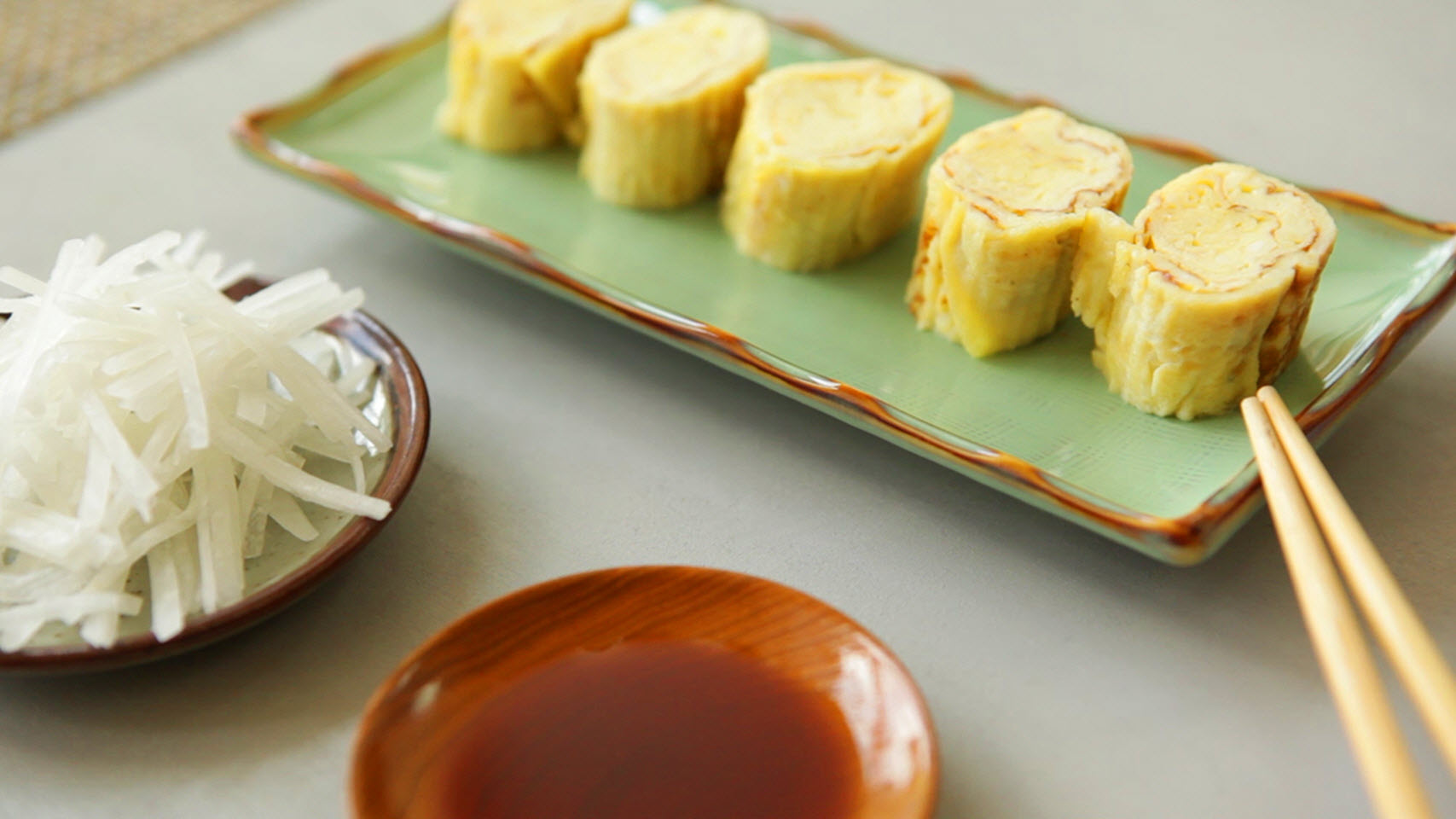
It's easy to make authentic Japanese food at home with this classic Japanese omelette recipe. Tamagoyaki is slightly sweet and seasoned with soy sauce, mirin, and dashi stock. It's a favorite in bento boxes and also makes an easy Japanese appetizer. Serve with shredded daikon and soy sauce for dipping.
Provided by ChefJackie
Categories 100+ Breakfast and Brunch Recipes Eggs Omelet Recipes
Time 25m
Yield 2
Number Of Ingredients 6
Steps:
- Whisk eggs, dashi stock, sugar, mirin, and soy sauce together in a bowl.
- Heat 1/3 of the oil in a large nonstick skillet over medium-high heat. Add about 1/3 of the egg mixture and quickly swirl the pan to evenly cover the bottom. Start rolling up the omelette from one side to the other as soon as it is set.
- Keep the roll to one side, then add another 1/3 of the oil to the skillet and another 1/3 of the egg. Swirl the pan, ensuring the entire bottom is covered, including around and underneath the first roll. Cook until set. Roll up from the side containing the first roll, so that is now at the center.
- Repeat the process with the remaining oil and egg. Transfer rolled omelette to a bamboo rolling mat. Roll up tightly and allow to cool for a few minutes.
- Unwrap the omelette and slice into 6 pieces. Serve warm or cold.
Nutrition Facts : Calories 208.6 calories, Carbohydrate 7.9 g, Cholesterol 372.3 mg, Fat 13.6 g, Protein 13.3 g, SaturatedFat 3.7 g, Sodium 260.2 mg, Sugar 7.8 g
TAMAGOYAKI (JAPANESE EGG OMELET) RECIPE BY TASTY
Here's what you need: dashi powder, salt, soy sauce, sugar, water, eggs, oil
Provided by Rie McClenny
Categories Breakfast
Yield 4 servings
Number Of Ingredients 7
Steps:
- In a small bowl, combine the dashi, salt, soy sauce, sugar, and water. Mix until everything is dissolved.
- In a medium bowl, beat the eggs and add the seasoning mixture. Mix until well-combined.
- Heat a tamagoyaki pan over medium-high heat. Brush a thin layer of oil on the pan.
- Pour a third of the egg mixture into pan and quickly swirl to cover the entire pan. When the egg is half-set, gently roll the egg.
- With the rolled egg still in the pan, pour in another third of the egg mixture. Lift up the rolled egg and let the mixture to flow under it. When the egg is half-set, roll the omelette toward you. Repeat with the rest of the egg mixture.
- Slice into bite-sized pieces.
- Enjoy!
Nutrition Facts : Calories 110 calories, Carbohydrate 1 gram, Fat 9 grams, Fiber 0 grams, Protein 4 grams, Sugar 1 gram
JAPANESE TAMAGO EGG
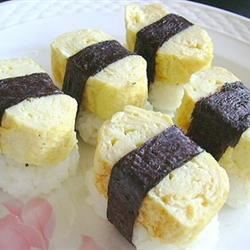
Tamago egg is classic Japanese folded omelet sometimes called tamagoyaki. The omelet is sweet, has a light texture, and works well when served over sushi rice and with soy and wasabi sauce for dipping. Tamago is the Japanese word for egg. Mirin is sweet rice wine and dashi is traditional Japanese soup stock (make from kelp or shiitake). These ingredients are now carried in most larger grocery stores or at Asian markets.
Provided by Pokerman11
Categories Appetizers and Snacks Wraps and Rolls
Time 25m
Yield 6
Number Of Ingredients 6
Steps:
- Beat eggs thoroughly in a bowl; whisk in dashi stock, sugar, mirin, and soy sauce until sugar has dissolved.
- Place a nonstick skillet or omelet pan over medium heat. Oil the pan with vegetable oil. Pour a thin layer of egg mixture into the hot pan and swirl to coat pan.
- When egg layer is firm on the bottom but still slightly liquid on top, lift up about 1 inch of the edge of the omelet with a spatula and fold end over remaining egg layer; continue rolling the omelet to the end and push the roll to the edge of the skillet. Oil the skillet again if it looks dry; pour another thin layer of egg into the skillet and lift the roll to let the egg flow underneath the omelet roll. Fold the omelet roll over the new layer of egg, continuing to roll to the end as before. Push omelet to edge of skillet.
- Pour a new egg layer into the skillet, oiling the pan if needed. Roll the omelet over to incorporate the next egg layer into the roll. Pour new layers and roll into the omelet until all egg mixture has been used. Remove omelet to a serving platter and cut into 6 equal pieces to serve.
Nutrition Facts : Calories 62.8 calories, Carbohydrate 2.6 g, Cholesterol 124.1 mg, Fat 3.8 g, Protein 4.4 g, SaturatedFat 1.1 g, Sodium 86.7 mg, Sugar 2.6 g
TAMAGOYAKI: JAPANESE ROLLED OMELET
Steps:
- Gather the ingredients.
- Beat eggs in a bowl.
- Add dashi soup and sugar in the egg and mix well.
- Heat a tamagoyaki pan over medium heat. Oil the pan.
- Pour a scoop of egg mixture in the pan and spread over the surface.
- Cook it until half done and roll the egg toward the bottom side.
- Move the rolled egg to the top side.
- Oil the empty part of the pan and pour another scoop of egg mixture in the space and under the rolled egg.
- Cook it until half done and roll the egg again so that the omelet becomes thicker.
- Cook the omelet until done.
- If you are using a regular frying pan, shape tamagoyaki on bamboo mat.
- Cut tamagoyaki into 1-inch-thick pieces.
- Serve for breakfast, put in a bento as a side dish, or used as a filling in sushi.
Nutrition Facts : Calories 255 kcal, Carbohydrate 13 g, Cholesterol 372 mg, Fiber 0 g, Protein 13 g, SaturatedFat 4 g, Sodium 176 mg, Sugar 13 g, Fat 16 g, ServingSize 2 Tamagoyaki (2 Servings), UnsaturatedFat 0 g
AUTHENTIC JAPANESE TAMAGO-YAKI

A Japanese style omelet is called dashi-maki-tamago or tamago-yaki. This omelet is often served for breakfast in Japan and it is one of the most popular menu items for bento, Japanese box lunch. This recipe usually requires a rectangular omelet pan but they are unusual outside of Japan or a professional kitchen so I make it with a regular round pan. It tastes just as good but looks a little different.
Provided by Hello Kitty with cu
Categories Breakfast
Time 5m
Yield 2 serving(s)
Number Of Ingredients 5
Steps:
- Beat the eggs in a bowl.
- Add sugar, Dashi, Soy sauce to the bowl and mix well.
- Heat oil in an omelet pan.
- For an easy omelet just pour the whole mixture into a large pan and lift up the edges to let the wet egg run underneath. Take off the heat just before top is firm. A more advanced and authentic cooking requires a rectangular omelet pan and folding/rolling the egg.
- * I buy the dashi as I would chicken bouin from the asian grocer and then usually sprinkle a pinch or less into the mix rather than mix the liquid form. It really helps the flavor round out.
Nutrition Facts : Calories 141.9, Fat 9.7, SaturatedFat 2.6, Cholesterol 317.2, Sodium 440.2, Carbohydrate 3, Fiber 0.1, Sugar 2.8, Protein 10.1
Tips:
- For a sweeter Tamagoyaki, add 1 tablespoon of sugar to the egg mixture.
- To make the Tamagoyaki more savory, add 1 tablespoon of soy sauce to the egg mixture.
- If you want a fluffy Tamagoyaki, whisk the eggs vigorously for a few minutes before cooking.
- Be patient when cooking the Tamagoyaki. Cook it slowly over low heat so that it cooks evenly throughout.
- When rolling the Tamagoyaki, use a sushi mat to help you get a tight, even roll.
Conclusion:
Tamago Maki, also known as Tamagoyaki, is a delicious and versatile Japanese egg roll that can be enjoyed for breakfast, lunch, or dinner. It is a great source of protein and is also very easy to make. With a few simple ingredients and a little practice, you can make a delicious Tamago Maki that will impress your family and friends.
Are you curently on diet or you just want to control your food's nutritions, ingredients? We will help you find recipes by cooking method, nutrition, ingredients...
Check it out »
You'll also love





